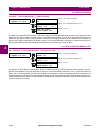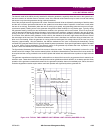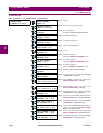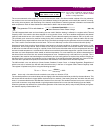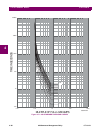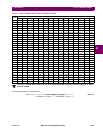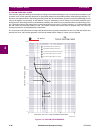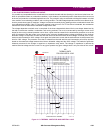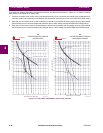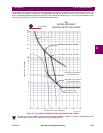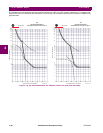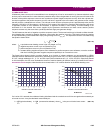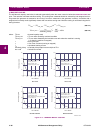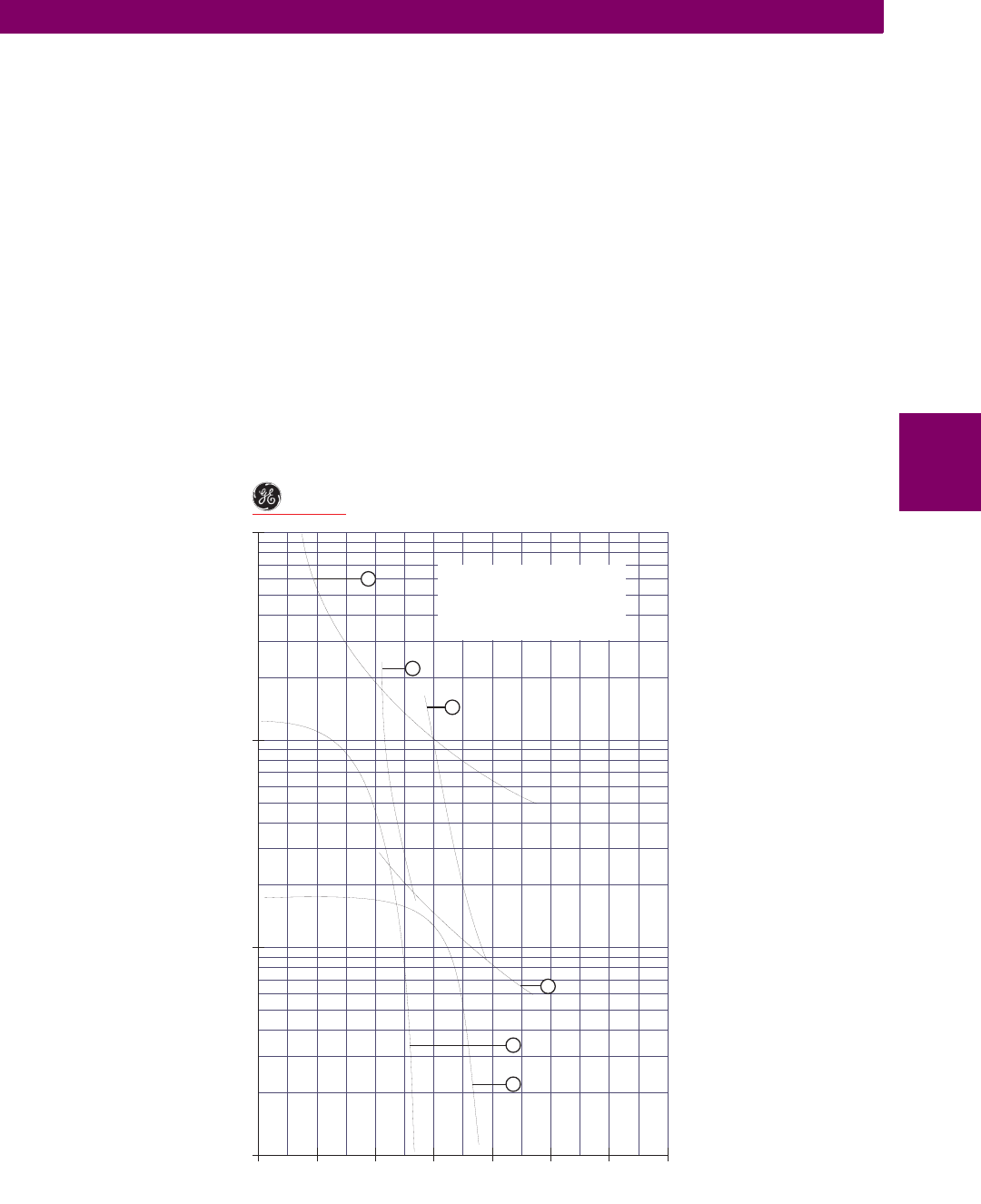
GE Multilin 489 Generator Management Relay 4-61
4 SETPOINTS 4.10 S9 THERMAL MODEL
4
c) VOLTAGE DEPENDENT OVERLOAD CURVE
It is possible and acceptable that the acceleration time exceeds the safe stall time (bearing in mind that a locked rotor con-
dition is quite different than an acceleration condition). In this instance, each distinct portion of the thermal limit curve must
be known and protection coordinated against that curve. The protection relay must be able to distinguish between a locked
rotor condition, an accelerating condition, and a running condition. The 489 voltage dependent overload curve feature is tai-
lored to protect these types of machines. Voltage is monitored constantly during starting and the acceleration thermal limit
curve adjusted accordingly. If the VT Connection setpoint is set to none or if a VT fuse failure is detected, the acceleration
thermal limit curve for the minimum allowable voltage will be used.
The voltage dependent overload curve is comprised of the three characteristic thermal limit curve shapes determined by
the stall or locked rotor condition, acceleration, and running overload. The curve is constructed by entering a custom curve
shape for the running overload protection curve. Next, a point must be entered for the acceleration protection curve at the
point of intersection with the custom curve, based on the minimum allowable starting voltage as defined by the minimum
allowable voltage. Locked Rotor Current and safe stall time must also be entered for that voltage. A second point of inter-
section must be entered for 100% voltage. Once again, the locked rotor current and the safe stall time must be entered, this
time for 100% voltage. The protection curve that is created from the safe stall time and intersection point will be dynamic
based on the measured voltage between the minimum allowable voltage and the 100% voltage. This method of protection
inherently accounts for the change in speed as an impedance relay would. The change in impedance is reflected by
machine terminal voltage and line current. For any given speed at any given voltage, there is only one value of line current.
Figure 4–13: THERMAL LIMITS FOR HIGH INERTIAL LOAD
489
THERMAL LIMITS
FOR HIGH INERTIAL LOAD
808826A3.CDR
1
1 23 45678
2
3
4
5
6
7
8
9
10
20
30
40
50
60
70
80
90
100
TIMET
O
TRIP (SECONDS)
MULTIPLES OFFULL LOAD AMPS
200
300
400
500
600
700
800
900
1000
1
2
3
4
6
5
1- Running Overload Thermal Limit
2- Acceleration Thermal Limit @ 80%V
3- Acceleration Thermal Limit @ 100%V
4- Locked Rotor Thermal Limit
5- Machine Acceleration Curve @ 80% V
6- Machine Acceleration Curve @ 100%V
GE Multilin




